In case of error when using the Play Store, a few simple steps are necessary to solve them. Learn more about common errors in the Google Play Store and how to fix them easily.
1. Google Play Store Beta Program Features
Do you know how Google manages at least four different update channels for Chrome? All of these apps are available under different apps on the Play Store with the names Chrome, Chrome Beta, Chrome Dev, and Chrome Canary. Similarly, many other application developers also want to test beta versions of their applications before publishing a new update for the general public. The Play Store facilitates the task of these application developers by allowing users to choose a beta program for a given application.
This allows interested users to test the latest versions of their favorite apps and get the new features before everyone else. For developers, this means easy access to public testing. It's a win-win situation for all parties involved. Not all apps offer a beta program, but many popular apps such as Facebook, Messenger, WhatsApp, Instagram, Google Apps, and more. To join an app's beta program, go to the Play Store page and scroll to the Join the beta section. Press on Join and you mostly finished. You must now wait a little. Sometimes it only takes a few seconds and sometimes it takes a few minutes, but not more than that.
When you revisit the Play Store page of the app, you should now see the option to Update your application. Once your application is updated, you will continue to receive other updates from the beta channel, unless you decline it. The process is identical to membership.
2. Disable Automatic Updates to Google Play Store Apps
Given the choice, most Android users will probably not update applications manually. Before, Google Play Store would automatically start updating apps while the device was loading. But not all updates are great and sometimes you might prefer not to update a particular application. Maybe the new update removes a feature that you like or adds something that you do not like. It is possible that the new update contains even some bugs.
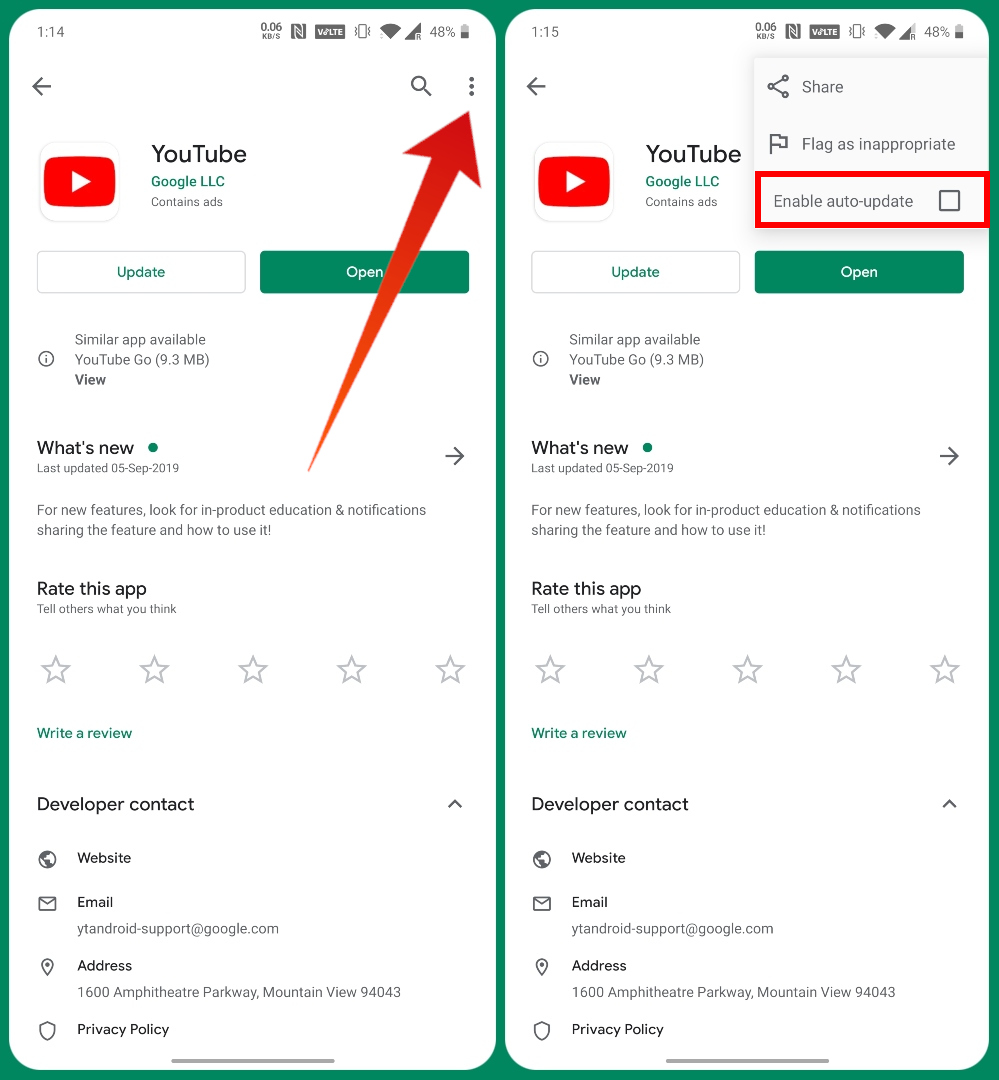
There are many reasons why one might wish that an application or applications do not update automatically. Fortunately, the Google Play Store also offers you this option. Just visit the app's Play Store page, tap the three-point overflow menu button at the top right and turn off the app. Enable automatic update option. If you prefer to disable the automatic update feature completely, go to settings, Press on Automatic update of applications and select your preferred choice.
Keep in mind that the Play Store has millions of applications. Many of them are good but there are still many who are wrong. Read our guide on how to identify fake apps on the Google Play Store.
3. Google Play Store Device Management Feature
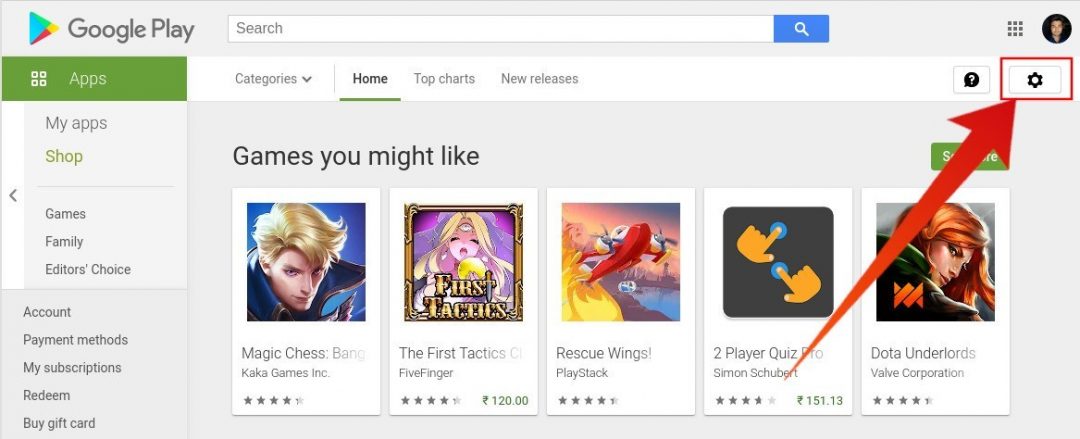
Unlike the Apple App Store, Google Play Store allows you to install apps on your Android devices wherever you are, provided you have access to a browser and your Google Account. You can visit the Play Store on the web, find something you like, select Install, choose a device and when you return, the app should already be installed.
Although you can be someone who has had a lot of Android devices in the last 10 years. Some of them may not even belong to you anymore. These devices too, populate the list of your possessed devices. This not only creates unnecessary clutter, but also makes looking for the devices you use a bit more difficult. But if you click on the settings button (with the gear icon), you will see a list of all your devices.
Here you can uncheck the devices you do not want to see in the Play Store list, or give them a more user-friendly name if you prefer, so that they are easier to recognize.
4. Advance Access feature of Google Play Store
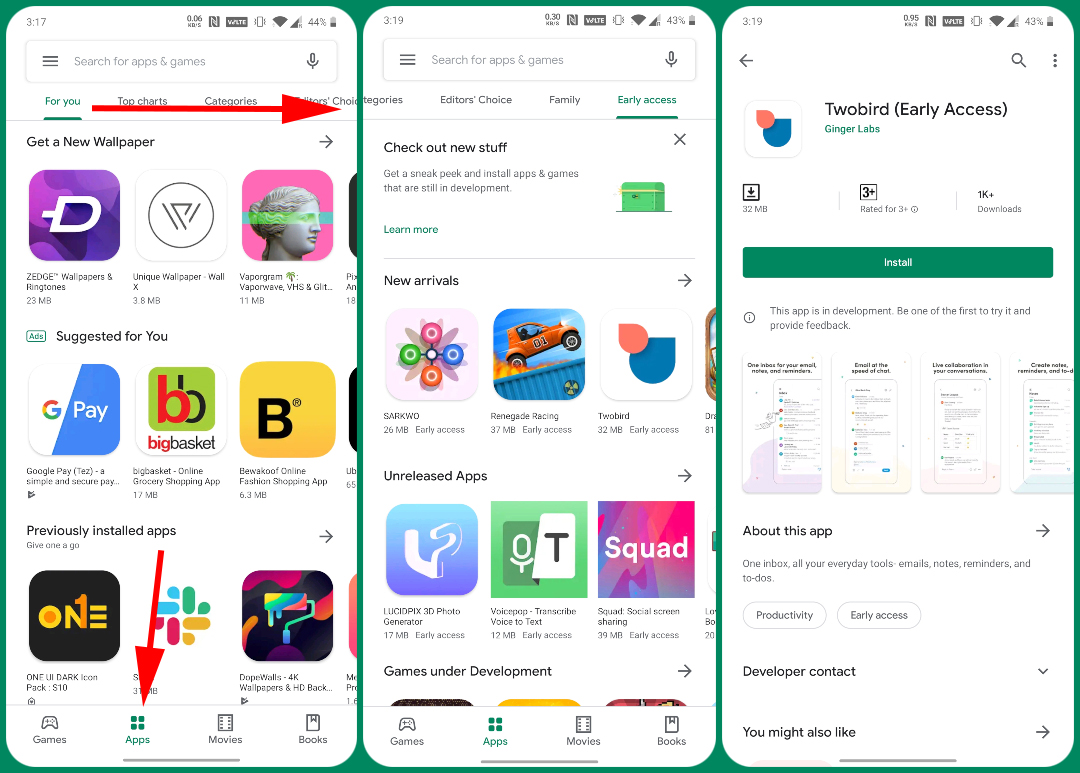
The Play Store not only allows you to try out beta versions of apps that have already been released, but you can also try new versions of apps that are about to go out on the Play Store . This includes games and other apps, but for whatever reason you have to select applications from the bottom bar on the Play Store first. Once in the apps, you can scroll through the tabs above and the Early access the tab is on the far right.
Under this one, you can find all the games and applications that have not been released yet and try them as normal. The only condition is that the reviews you submit are only visible to the developer, not to the audience. This makes sense because the app is still not published. So it's not ideal to ruin its bug rankings.
5. Try the game demos before you install
Games tend to be graphics-hungry and sometimes even a simple arcade game can cost hundreds of megabytes. That's why it's not so convenient to install a set of games to try the one you want with the apps. Some time ago, Google introduced a feature on the Play Store called Play Instant. It allows users to try a short demonstration of a game before committing to the full installation. You do not even need to install the demo version on your phone, as is commonly done on a computer or console.
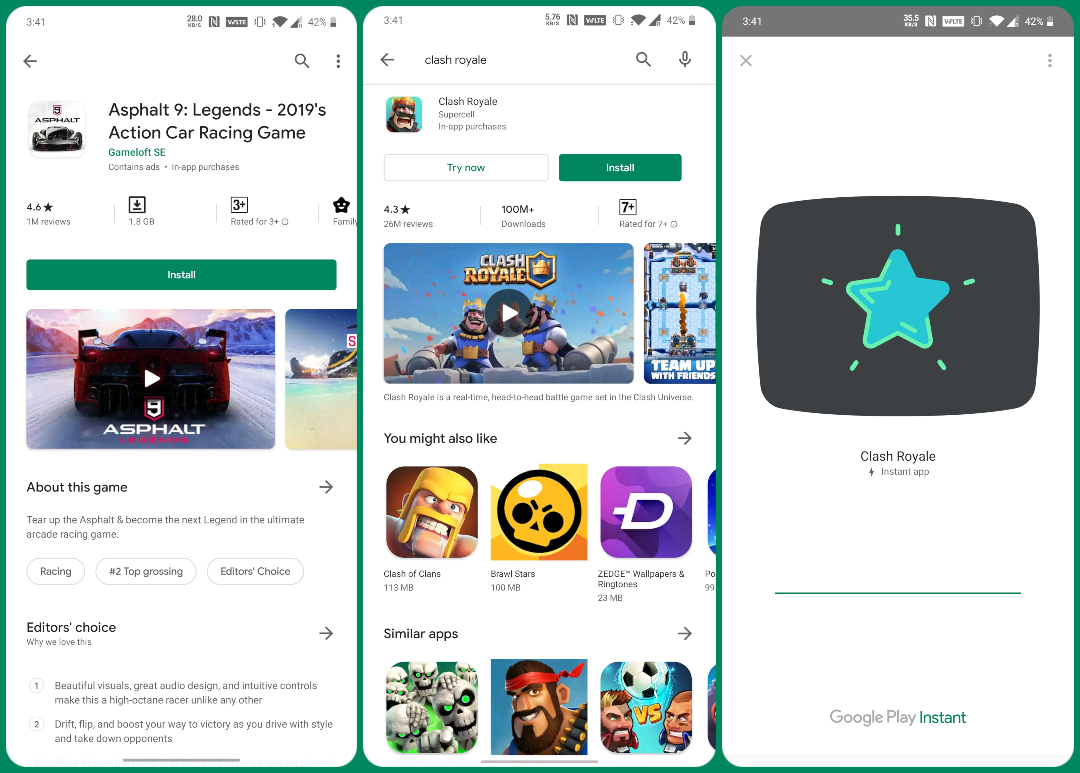
Just go to the Play Store page of a game and you should see two options: Try Now and Install, instead of just Install. When you select Try Now, the demo is instantly loaded and the game begins. However, this may take some time if your connection is slow. Once you have left the game, nothing has been installed on your phone.
This also allows you to try applications from a Google search result, for example, without installing them. However, this is a developer-dependent feature, so a developer must enable it. Unfortunately, not many do it. You must also activate it in settings > Google Play Instant.
Not just the Google Play Store, the Android operating system has a plethora of hidden features that most people do not know about or attempt. Check out our list of 25 hidden Android settings and tips to get the most out of your smartphone.
6. Parental Control feature of Google Play Store
The Play Store hosts a vast selection of apps and games, which are not all designed for kids. That's why it's important, if you have kids, to make sure they do not fall on apps that do not suit them. To set up parental controls for apps visible on the Play Store, open the side menu drawer. Then go to settings > Parental Controls and turn them on.
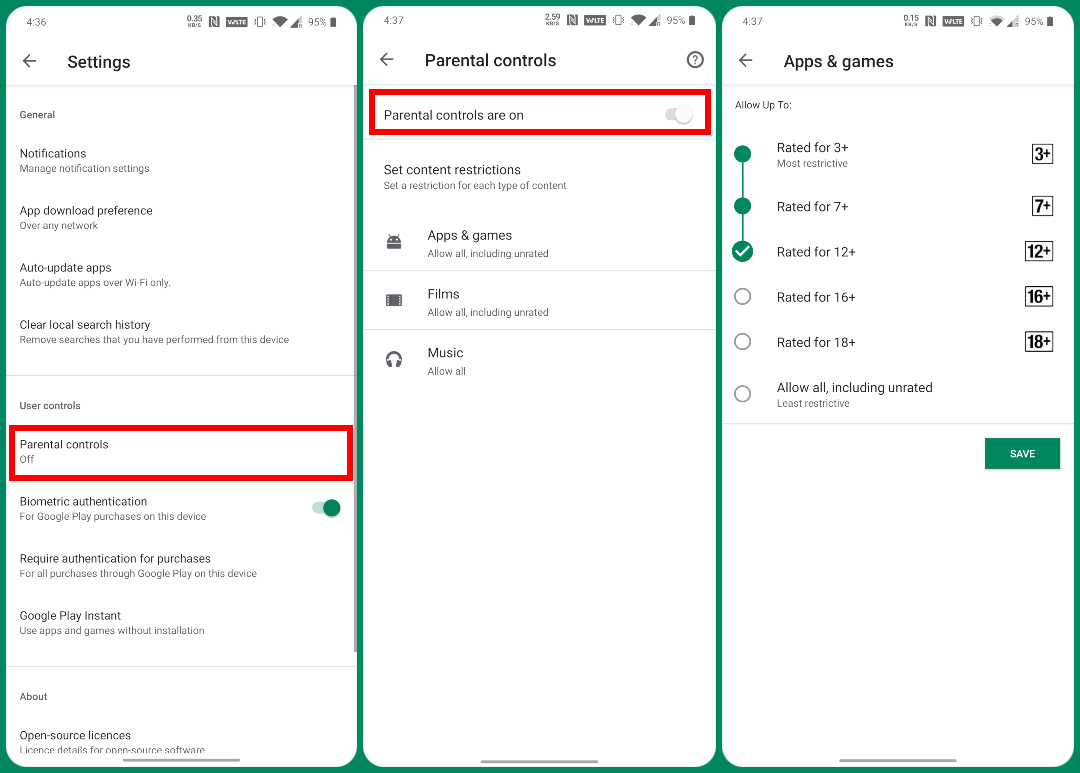
You will then be prompted to configure a PIN. Once the PIN is configured, you can select one of the options available in Apps, Music, and Movies and set an age filter for this type of content. You must use the Parental Control feature of the Google Play Store if you allow your child to use your phone.
7. Add apps to the wish list
The Play Store is a store after all. It is an online store where you can buy goods and digital services. So it makes sense that you sometimes want to buy or install something, but you do not want to do it at that time. You may be traveling and prefer to install an application later when you are connected to WiFi. There may be many other reasons. Whatever the case may be, the Play Store allows you to add content to your wish list.
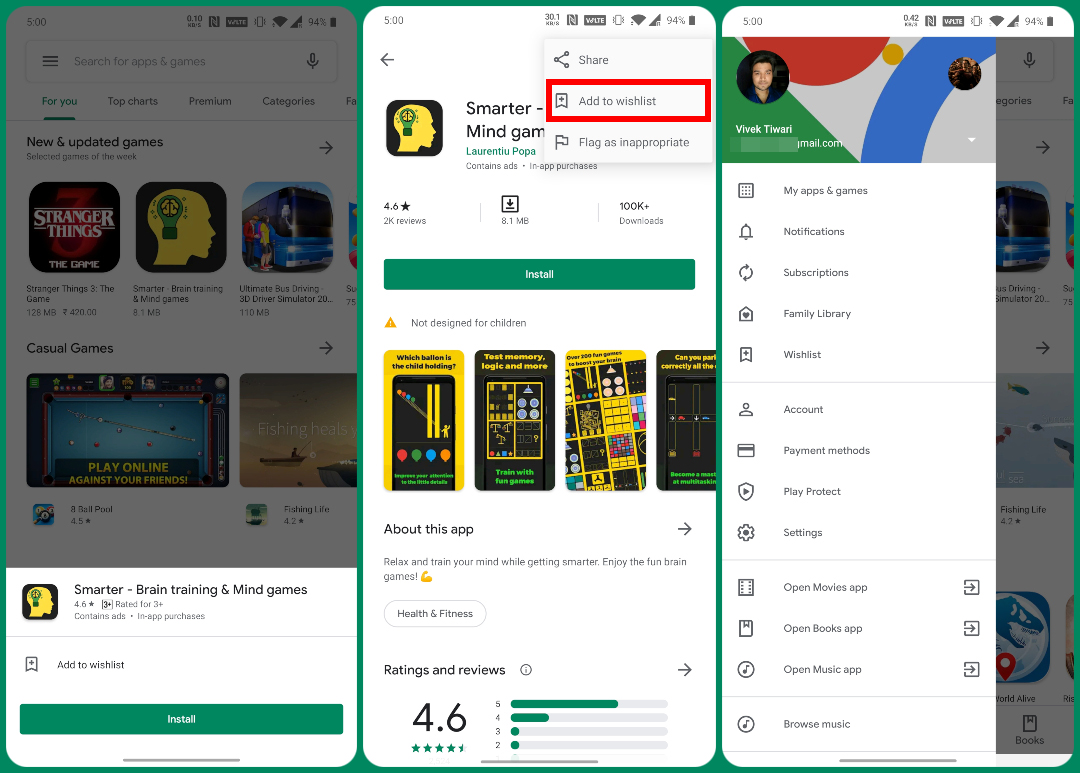
On older versions of the Play Store, apps, games, movies, books, etc. had a three-point overflow menu button next to his name. Tapping on them, some options were revealed, including the addition to the wish list. Since the new update blank, these buttons are gone, but you can still access the options to install the app or add it to your wish list by long-pressing an icon d & #39; #39; s application. You can access your wish list from the side drawer menu.
8. Play Store fingerprint authentication for purchases
On iOS, you need your PIN or fingerprint to install an app from the App Store. This can get a little tedious if you are on a spree setup. The Google Play Store makes things a bit more convenient by requiring that an authentication when making payments. Normally, you must enter your Google password, which can be long and complicated.
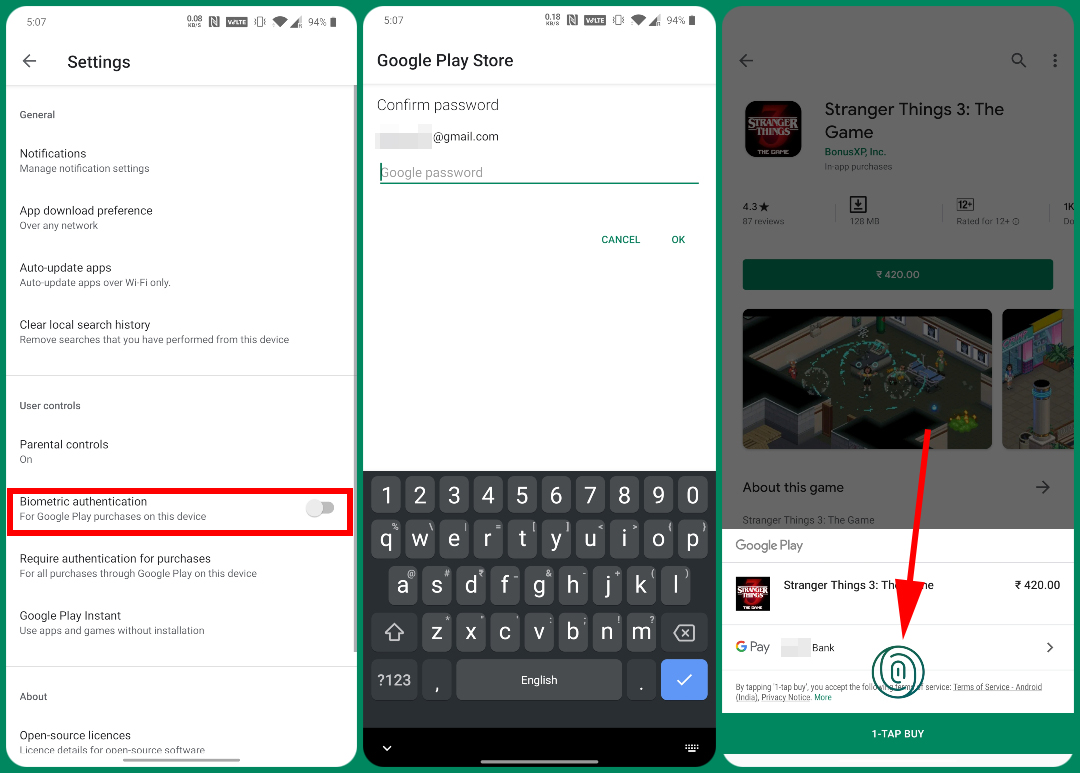
But the Play Store also allows you to do it with your fingerprint. You will have to activate it in the settings first. Go to settings and switch to Biometric authentication. Enter your Google password and press OK. The next time you or someone else tries to buy something through the Play Store, you can authenticate the transaction with your fingerprint. This also includes in-app purchases made through the Play Store. You must use the fingerprint authentication feature of Google Play Store to make sure no one else can install new apps.
9. Hide the specific results of a search
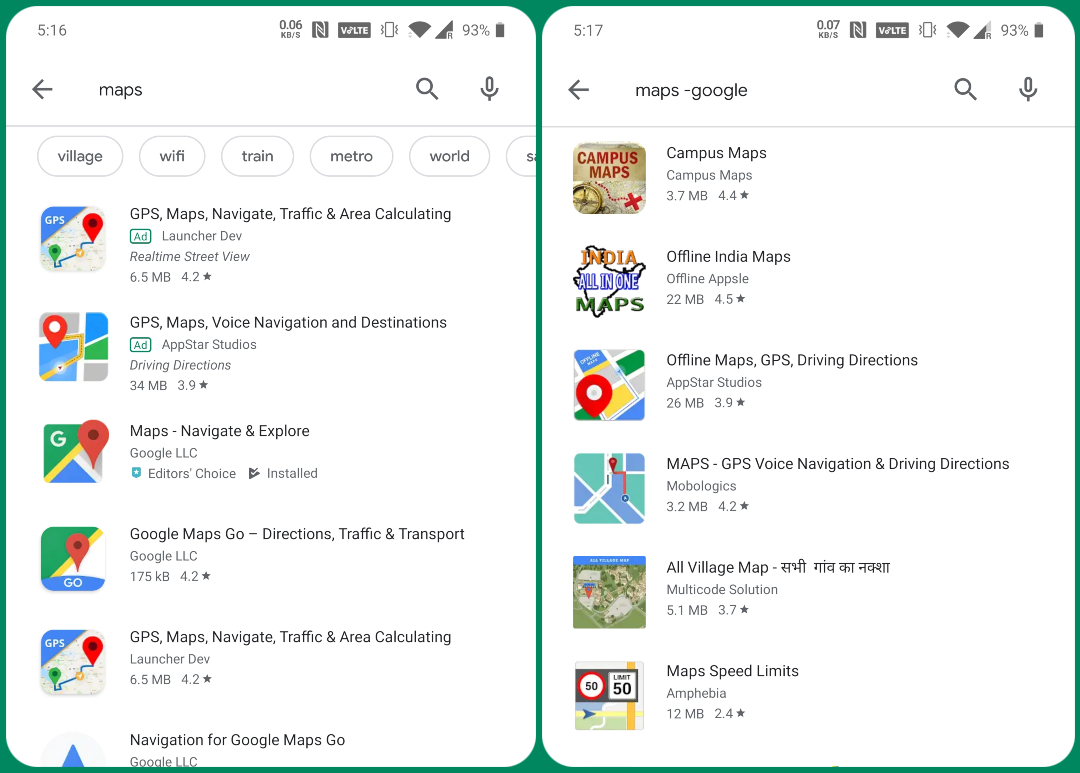
Another nice feature that even some advanced users may not be aware of is related to the Play Store search feature. When you type an item to search, you can add a dash (minus sign) and enter the search result that you do not want to appear in the results. For example, look at the screenshots above. A simple search for maps brings at least three Google apps at the top. Search Google Maps and the results are very different.
Finally, it is time to complete the list of features of Google Play Store. In addition to regular application updates and tracking of your favorite apps, you must turn on the Google Play Store fingerprint authentication feature to ensure security and avoid the need to enter the PIN code at every installation or purchase .
Read more: 7 Android hacks that do not need root
